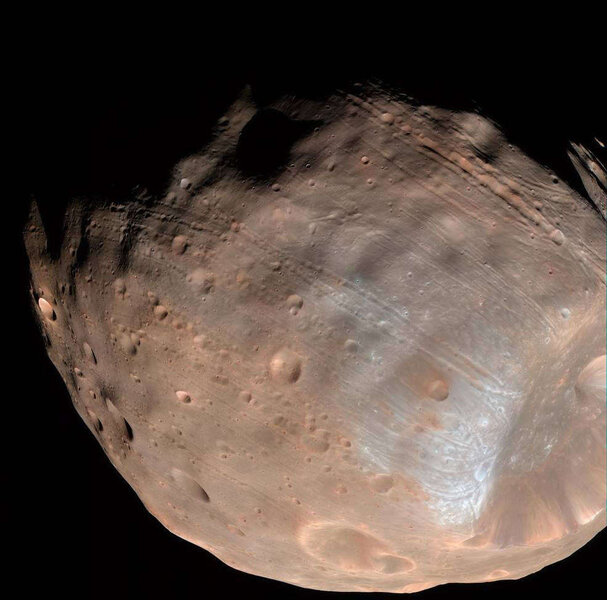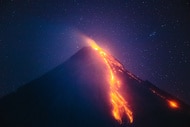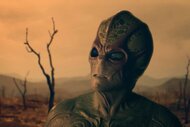Create a free profile to get unlimited access to exclusive videos, sweepstakes, and more!
Did Mars once have rings? Its mysterious moon Deimos might have the answer

Martian moons Phobos and Deimos are strangely shaped, and while there is no shortage of weirdness in the cosmos (Arrokoth, anyone?), it could mean the planet they orbit is hiding a secret about its past.
Deimos (above) has something of an unusual orbit, but nobody really thought anything of it until now. Both moons were even thought to be asteroids captured by the gravitational forces of Mars, until their orbits, which are almost even with the Red Planet’s equator, gave them away as having formed around the same time. Now scientists from the SETI Institute (which doesn't just search for aliens) and Purdue University have found that Deimos probably wouldn’t even exist if Mars’ gravity hadn’t once turned another moon into a ring of debris and space dust.
“[There is a] possibility that the large orbital inclination of the Martian satellite Deimos originated in an orbital resonance with an ancient inner satellite of Mars more massive than Phobos,” said Matija Ćuk, who led a study recently published in Earth and Planetary Astrophysics.
Moons are affected by the gravity of the planet they orbit. They are also affected by each other's gravity. Orbital resonance is a phenomenon in which at least two satellites floating around a planet are subject to gravitational pull from each other because their orbital periods are related. Phobos (below) orbits 3,700 miles away from Mars, while Deimos is the more distant moon that orbits at 48.34 million miles away and has an orbital period three times that of Phobos. Its orbit also tilts two degrees away from the Martian equator.
Just two degrees might sound negligible, but that and its distance from Phobos reveal something about how and when Deimos formed. Ćuk and her team believe that both Phobos and Deimos are remnants of much larger moons that were pulled in by the gravity of a prominent Martian ring until it finally broke them apart.
Mars probably experienced a cycle of moons forming and being crushed into rings. The moon that formed Deimos is thought to have been 20 times more massive than Phobos, and gravitationally crushed when it approached the planet some 3 billion years ago. Deimos emerged from this and ended up traveling far from Mars and its ring. Next to end up in pieces was the moon from which Phobos spawned only 200 million years ago — virtually nothing in cosmic terms.
Both moons have a predictable orbital resonance. This told the team that the only way a moon could have influence on Deimos is if that moon moved outward. Meaning the ring from the much older moon that Deimos came from was pushing the newer Phobos that way. The movement of Phobos then pushed Deimos further out. If a moon gets close enough to the planet that it spins faster than the planet, it will move towards the planet. If it happens to be far enough and spinning just as fast, it will move further away.
So what will happen to Phobos? Its fate is inevitable. With the gravity of Mars pulling it in, it will someday get too close to the planet and see the same fate as the moon it was once a part of — and that encounter with gravity will form a new moon and a ring with the leftovers.
Future Martian settlers may want to keep an eye out.















